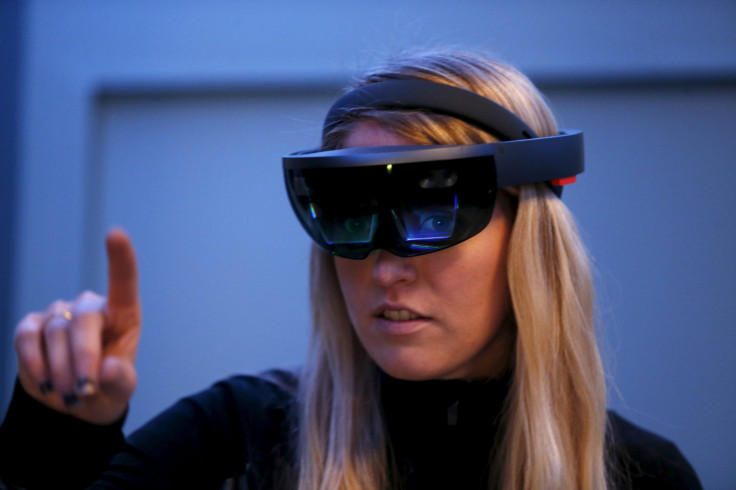Microsoft Working On HoloLens VR Capable Tablet-Like Device: Reports

While Microsoft has shut the door on the Windows Mobile OS, it may not be abandoning the surface line of devices anytime soon. Reports emerged Wednesday indicating that the company had its next device in the works — a foldable tablet that may have a holographic display.
This is not just another tablet with a stand but actually one with dual displays that can merge into one upon laying it out. Microsoft is going one step further than available devices and making this display capable of running the company’s Mixed Reality Holographic technology, according to technology new website Thurrott.
The device seems to be the derived from a patent that the company was granted in January, which depicted similar hardware. However, the fact that the company has an AR/VR element to the tablet is what the report indicates.
According to SlashGear, the lead engineer on the Microsoft Mixed Reality project, Alex Kipman is involved with the new device.
The device is also expected to support a stylus-based functionality which will support the company’s applications such as OneNote, Mail, Calendar and others.
So how will a holographic display work and how will it be different from traditional displays?
According to Thurrott, the display would be capable of displaying holograms. Essentially that means that the display will be able to project holograms that would look like real subjects.
The device is not expected to be a low-end, however, according to the publication. It is more likely that it is a premium device, expected to sell in low volumes.
Also, since it has a new form factor, new kinds of displays and hardware that will be compatible with AR/VR technology, there is little chance that it will come for cheap.
According to tech portals such as Walking Cat, the device is also expected to support voice call functionality and is expected to have the ARM Hero chipset, same as the Surface devices.
Another far-fetched rumor is that Andromeda might not be a reference to Google’s project by the same name, but instead the name of a Windows component.
Microsoft is expected to embark on new projects in the consumer durable space post the shutdown of Windows Mobile OS. The company is also expected to continue its existing line of hardware — the Surface line of tablets and laptops.
Chances are that it plays to its strengths and develops its existing technology to suit consumer tech devices such as tablets. Instead of competing with the likes of iOS and Android, the company can develop technologies such as Holographic technology, which is currently the most advanced commercial VR technology. However, the end product might not be a consumer product, just like the $3000 HoloLens. Rather it might be an enterprise product with a premium price tag, according to the reports.
© Copyright IBTimes 2024. All rights reserved.




















